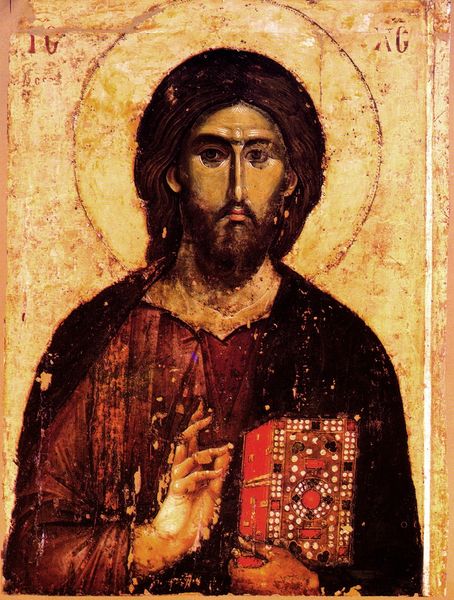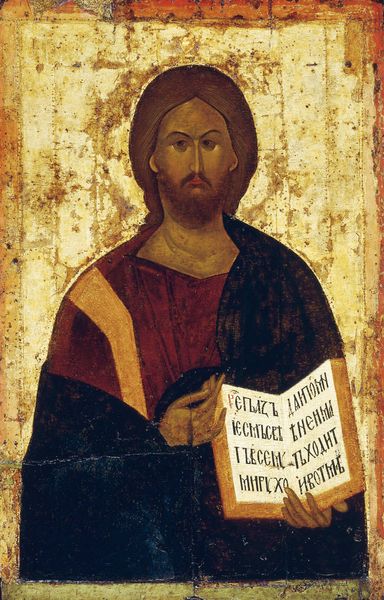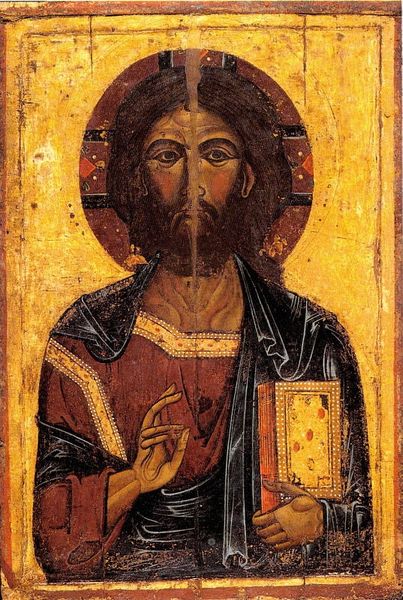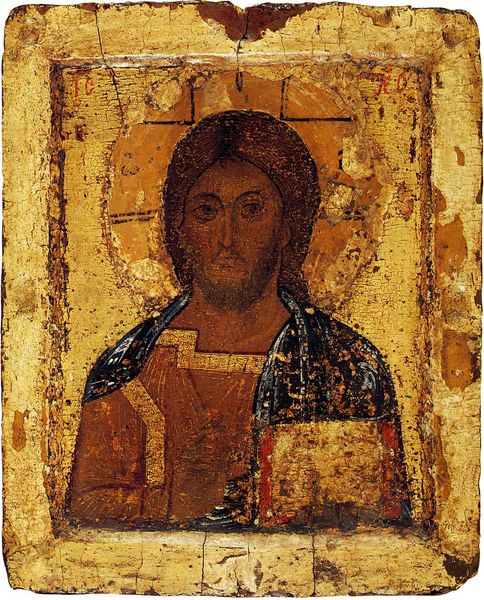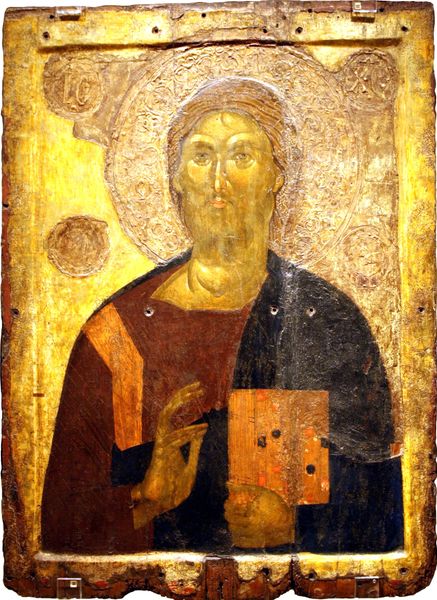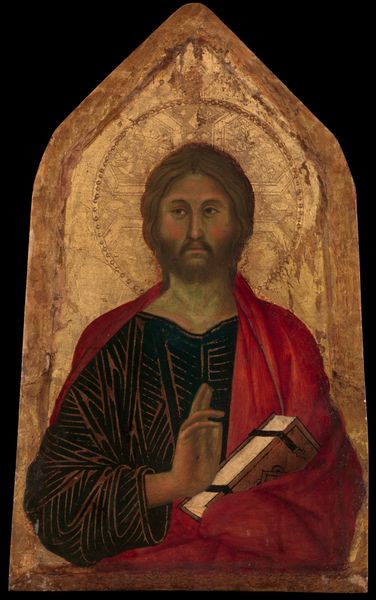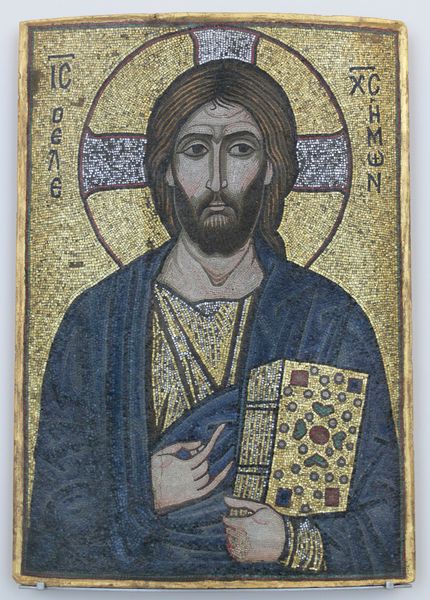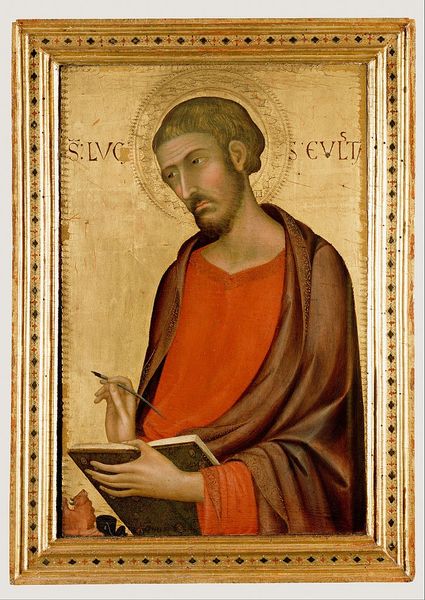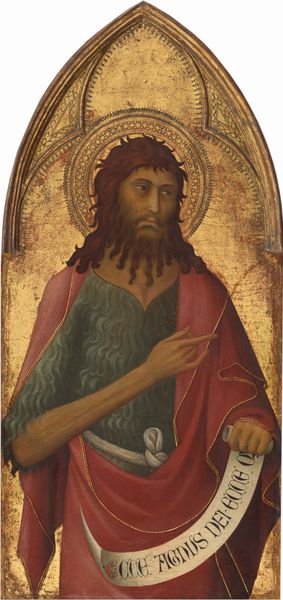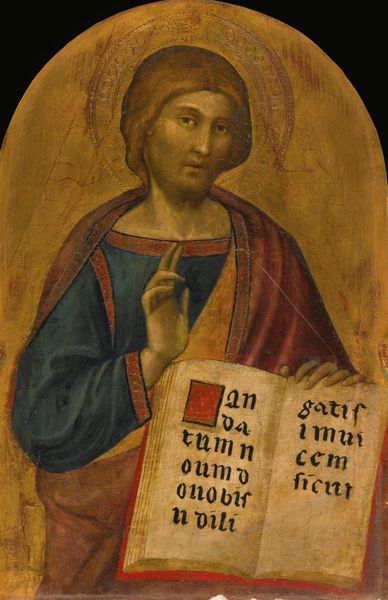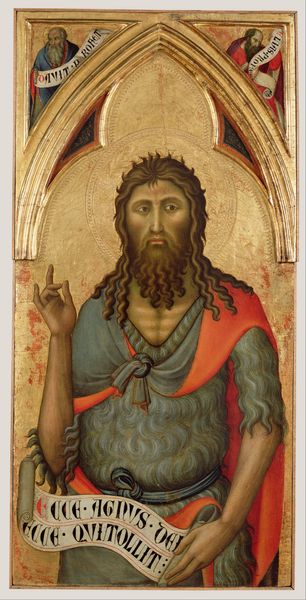
panel, tempera
#
portrait
#
byzantine-art
#
medieval
#
panel
#
tempera
#
portrait reference
#
history-painting
Copyright: Orthodox Icons,Fair Use
Curator: Looking at this image of the “Christ Pantokrator,” dating back to about 1450, which currently resides in the Pushkin Museum in Moscow, I’m struck by its somber presence. Editor: Yes, there's something immediate about its direct gaze and, I must say, the rather impressive application of gold leaf. But, really, that’s just my gut reaction to the material presence here. Tell me more. Curator: Well, the icon comes to us from a particularly turbulent time, steeped in the history of Byzantium and its intersection with the rise of the Russian Orthodox Church. Think about the socio-political power dynamics at play. Icons were not just objects of veneration; they were statements. The image of Christ Pantokrator – the ruler of all – becomes a powerful declaration of faith, authority, and, potentially, even resistance. Editor: And that authority is, in part, communicated through very deliberate material choices. Tempera on a wood panel. How does that speak to the role and status of the artist here? And consider, too, the accessibility - or inaccessibility - to materials and artistic training at the time. Curator: Exactly. Access dictated production. Who had access and for what reasons becomes critical to its interpretation. The deliberate artistic choices made, from the depiction of the face to the color scheme and the stylized features. And notice his hands – one offering a blessing, the other holding a Gospel book. It’s a very constructed image, loaded with meaning. Editor: Thinking about materiality as labor, it is remarkable to look at the degree of refinement apparent despite such scarcity of resources at this time in Russia. It speaks volumes of their artistic dedication and faith in material form. Curator: Absolutely. This icon provides us with a portal through which we can delve into questions of religious authority, social hierarchies, and cultural identity, reminding us of the interwoven nature of faith, art, and politics during the Medieval era in Russia. Editor: A testament to art's power in encoding labor, value, and belief—visible to all but deeply interwoven with time.
Comments
No comments
Be the first to comment and join the conversation on the ultimate creative platform.
